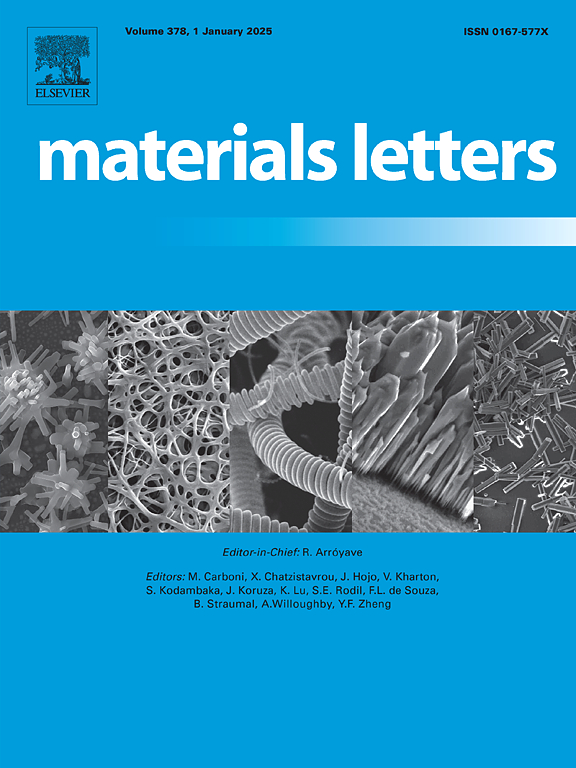Development of a novel PDMS/PEG/PDMS multilayered composite film for advanced thermal management solutions for Photovoltaics
IF 2.7
4区 材料科学
Q3 MATERIALS SCIENCE, MULTIDISCIPLINARY
引用次数: 0
Abstract
This study presents a novel multilayered composite thin film of polyethylene glycol (PEG4000) sandwiched between two layers of polydimethylsiloxane (PDMS) with a prime focus on improving photovoltaic device efficiency and longevity. The PDMS/PEG/PDMS configuration absorbs heat from the device and near-infrared (NIR) sunlight thereby reducing thermal buildup and preventing material degradation. PDMS/PEG/PDMS film composite was fabricated using the doctor blade technique, this hydrophobic composite undergoes a solid-to-liquid phase transition at approximately 50–60 °C, enhancing thermal energy management. In its liquid state, the film composite exhibits 85.01 % visible transmittance and 11.11 % NIR reflectance, while in solid state, it shows 62.94 % visible transmittance and 13.40 % NIR reflectance. The phase change material (PCM) maintains cyclic stability without leakage and demonstrates a transparency shift with heat absorption, indicating effective thermal cycle stability.
求助全文
约1分钟内获得全文
求助全文
来源期刊

Materials Letters
工程技术-材料科学:综合
CiteScore
5.60
自引率
3.30%
发文量
1948
审稿时长
50 days
期刊介绍:
Materials Letters has an open access mirror journal Materials Letters: X, sharing the same aims and scope, editorial team, submission system and rigorous peer review.
Materials Letters is dedicated to publishing novel, cutting edge reports of broad interest to the materials community. The journal provides a forum for materials scientists and engineers, physicists, and chemists to rapidly communicate on the most important topics in the field of materials.
Contributions include, but are not limited to, a variety of topics such as:
• Materials - Metals and alloys, amorphous solids, ceramics, composites, polymers, semiconductors
• Applications - Structural, opto-electronic, magnetic, medical, MEMS, sensors, smart
• Characterization - Analytical, microscopy, scanning probes, nanoscopic, optical, electrical, magnetic, acoustic, spectroscopic, diffraction
• Novel Materials - Micro and nanostructures (nanowires, nanotubes, nanoparticles), nanocomposites, thin films, superlattices, quantum dots.
• Processing - Crystal growth, thin film processing, sol-gel processing, mechanical processing, assembly, nanocrystalline processing.
• Properties - Mechanical, magnetic, optical, electrical, ferroelectric, thermal, interfacial, transport, thermodynamic
• Synthesis - Quenching, solid state, solidification, solution synthesis, vapor deposition, high pressure, explosive
 求助内容:
求助内容: 应助结果提醒方式:
应助结果提醒方式:


